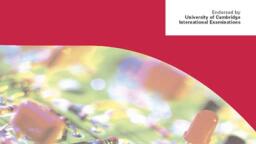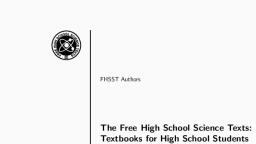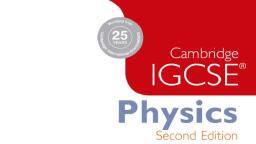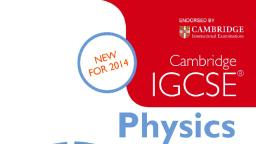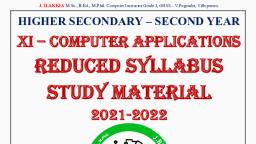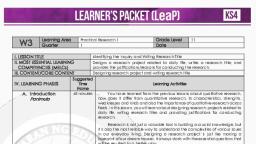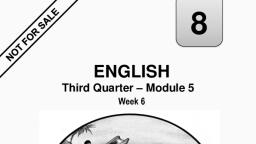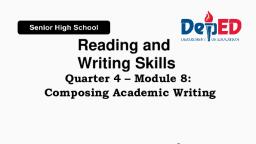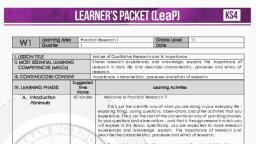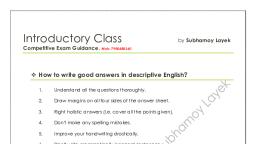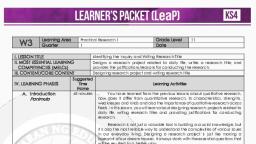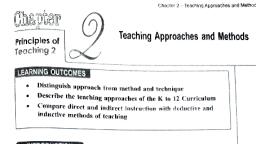Page 2 :
Contents, Introduction, Revision Technique, Examination Technique, рage, AQA Coordinated Science : Electricity, 1 Circuits, 2 Mains electricity, 3 Using electricity, 4 Static electricity, Sample Answers on Electricity, at Grade A and Grade C, 12, 16, 20, 24, AQA Coordinated Science : Forces and Motion, 5 Velocity and acceleration, 6 Forces, Sample Answers on Forces, at Grade A and Grade C, 26, 30, 34, AQA Coordinated Science : Waves, 7 Waves, 8 The electromagnetic spectrum, 9 Sound, Sample Answers on Waves, at Grade A and Grade C, 36, 40, 44, 48, AQA Coordinated Science : Earth and Beyond, 10 The Earth, 11 The Solar System, 12 Stars and the Universe, 58, AQA Coordinated Science : Energy resources and transfers, 13 Conduction. Convection. Radiation, 14 Energy transfers, 15 Energy resources, 16 Work and energy, 17 Magnetic effect of a current, 18 Electromagnetic induction, Sample Answers on Energy, at Grade A and Grade C, 62, 66, 70, 74, 78, 82, 86, AQA Coordinated Science : Radioactivity, 19 Radioactivity, 20 Atomic structure, radioactive decay, 88, 92, AQA Coordinated Science : Triple Award Physics, 21 Flectronic control circuits, 22 Moments, momentum. circular motion, 23 Lenses, 96, 100, 104, Answers to all the Exam Questions, with Examiner's Hints, 108, Index, 120, Revision Calendar (detachable, for your bedroom wall), Revision Cards (detachable. for revision in spare moments), To see the latest Exam Specification for AQA Coordinated Science, visit www.aqa.org.uk, To see this Exam Specification "mapped' with the relevant pages in Physics for You., visit www.physicsforyou.co.uk
Page 3 :
Introduction, Top Physics Grades for You is designed to, help you achieve the best possible grades in, your GCSE examination., It focuses on exactly what you need to do to, succeed in the AQA Coordinated Science exam, (for Single or for Double Award, and at either, Foundation or Higher Tier), or in the AQA, Physics B exam., For each section in the AQA Coordinated Science, examination specification, there is a Topic as, shown on the opposite page., For each Topic there are 2 double-page spreads:, • a Revision spread, which shows you exactly, what you need to know (see below), and, • a Questions spread, which lets you try out, some exam questions on this topic., The Answers for these, with Examiners' Tips., are given at the back of the book., There is a separate book for AQA Modular, Science and AQA Modular Physics., This revision book is best used together with the, Physics for You textbook, but it can also be, used by itself., In addition, for each section of Topics there is:, a Sample Answer spread, showing you, answers at Grade-A level and at Grade-C, level, with Examiners Comments and Tips., These will help you to focus on how to, improve, to move up to a higher grade., There are also books for, Top Biology Grades for You and, Top Chemistry Grades for You., Each Revision spread is laid out clearly. using boxes:, The pages show essential content for the exam., Each spread starts with some, ThinkAbout questions, to, help you focus on the topic., The answers are shown at, the bottom of the page., Topic number., RADIOACTIVITY, Boxes marked D are needed, for Double Science (and for, Triple Science). These are not, needed for Single-Award Science., Items are often boxed, for clarity., Boxes marked H are needed, for the Higher Tier only., These are not needed for the, Foundation Tier., H, Worked examples, are in green boxes., A Take care' box, of Examiners Tips., Page references, for more details,, if you need them., Answers to the ThinkAbout, questions are given here., As a first step, go through this book and:, Then use the pull-out Revision Calendar, to keep a record of your progress., • If you are studying for Single-Award, Science, cross out all the boxes labelled, At the back of the book there are detachable, • f you are studying for the Foundation Tier., cross out all the boxes labelled H, • If you are not studying for Triple Award, Physics, cross out all of Topics 21, 22, 23., Revision Cards, with very brief summaries., You can use these to top up your revision in, spare moments - for example, when sitting on, a bus or waiting for a lesson., Best wishes for a great result in your exams., Keith Johnson, Urheberrechtlich geschütztes Material
Page 4 :
Revision Technique, Prepare, 1. Go through the book, crossing out any boxes that you don't, need (as described at the bottom of page 3)., ( where am I, ( going, to start?, 2. While doing this, you can decide which are your strong topics., and which are topics that you need to spend more time on., 3. You need to balance your time between:, • Revising what you need to know about Physics., To do this, use the first double-page spread in each topic., • Practising by doing exam questions., To do this. use the second spread in each topic., Do these two things for each topic in turn., Revise, 4. Think about your best ways of revising. Some of the best ways, are to do something active. To use active learning you can:, • Write down notes, as a summary of the topic (while, reading through the double-page spread)., Use highlighter pens to colour key words., • Make a poster to summarise each topic (and perhaps pin it, up on your bedroom wall)., Make it colourful, and use images'sketches if you can., • Make a spider-diagram or mind map of each topic., See the example here. but use your own style:, • Ask someone (family or friend) to test you on the topic., • Teach the topic to someone (family or friend)., Which method works best for you?, nen metalt,, partiol!, 'vvate, Ligaids, we pror, troughthe, Subitana, metals are, Eco, Ridare n, a heute, -asalare kafr w, - dmale-glazing, Energy, Joes from, r ald, 5. It is usually best to work in a quiet room, for about 25-30, minutes at a time. and then take a 5-10 minute break., 6. After you have revised a topic, make a note of 3rd April, the date on the pull-out Revision Calendar., LCOnVECTION, inliquid! and gase!, patides cm meie,, Practise, 7. When you have revised a topic, and think you know it well,, then it's important to practise it. by answering some exam, questions. Turn to the second spread of the topic and answer, the questions as well as you can., Part of a Mind Map for Topic 1:, Conduction, Convection, Radiation., 8. When you have finished them, turn to the Examination, answers and tips that start on page 108., Check your answers, and read the Examiner's Tips., Can you see how to improve your answers in future?, A Mind Map always makes more sense, when you make it yourself, Use colour and images it you can., 9. Keep a record of your progress on, the Revision Calendar., 3rd Aprit, 4th April, Re-revise and Top-up, 10. It is important to re-revise each topic again, after an interval., The best intervals are after 10 minutes, after 1 day, and after, 1 week (see the graphs in Physics for You, pages 382-383)., For this top-up you can use the topic spread, your notes. poster, or mindmap, and the Revision Cards at the back of this book., 4, Urheberrechtlich geschütztes Material
Page 5 :
A revision flowchart:, Choose a topic to revise., 1. Revise, • ThinkAbout : try the questions in the ThinkAbout box., The answers are at the bottom of the page., • Read the rest of the double-page spread., Focus on any parts you are not sure about., • Do make Notes, or a Poster, or a Mind Map., Highlight key points in colour., • Re-read the spread after a break of 5-10 minutes., • Take care : read the Take care' box., Can you see how you can use this advice?, • / Tick and date the pull-out Revision Calendar., 2. Practise, • Try the questions on the double-page of questions., These are in the same style as the ones in the exam., • Check your answers. The answers begin on page 108., Read the Examiners' Hints carefully., Go back over anything you find difficult., • / Tick and date the pull-out Revision Calendar to, keep a record of your progress., Then later:, Re-visit, Re-visit each topic 1 day later, and then 1 week later., Read the double-page spread, your notes or Mind Map,, and the questions you answered., Up your Grade, At the end of each section of topics, read the Sample, Answers at Grade A and Grade C., Look at the Hints and Tips for improving your grade., Тор-uр, Use the Revision Cards to remind you of the key points,, and test yourself., Even better, make your own Revision Cards., Urheberrechtlich geschütztes Material


